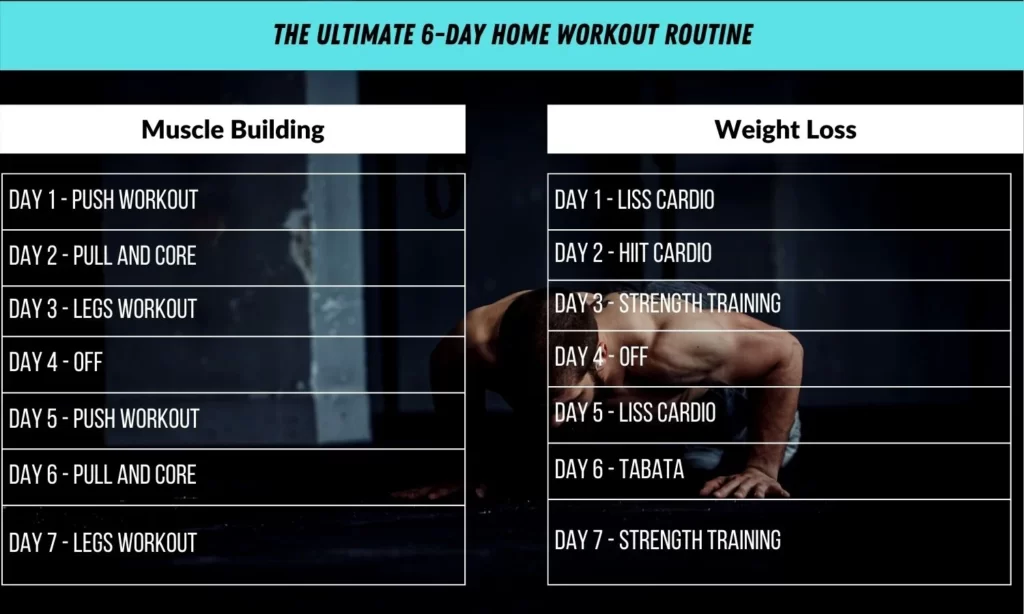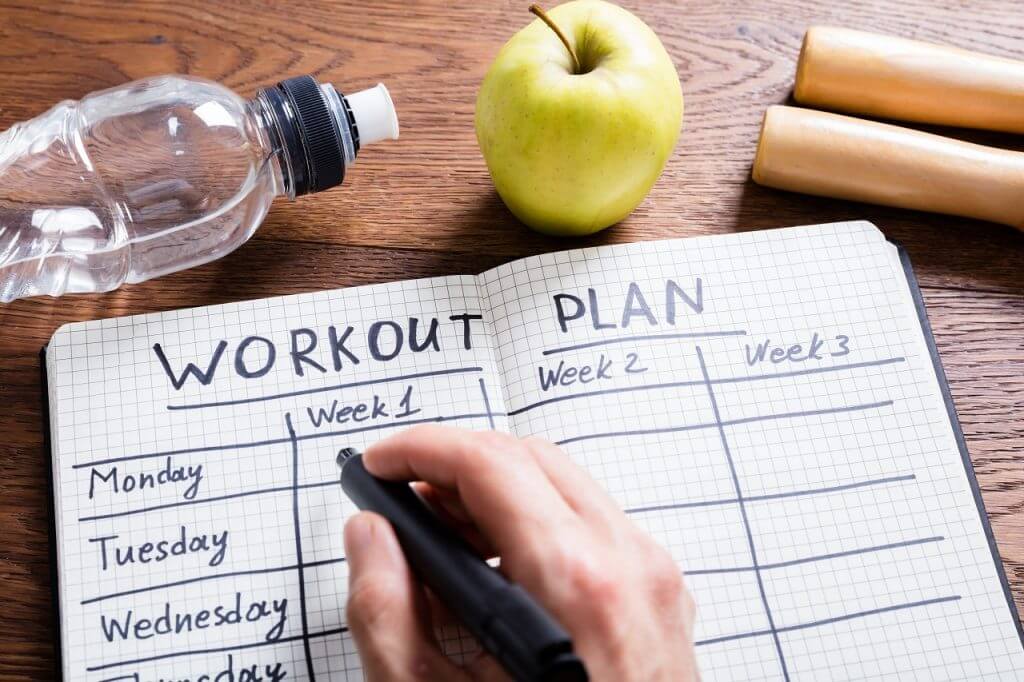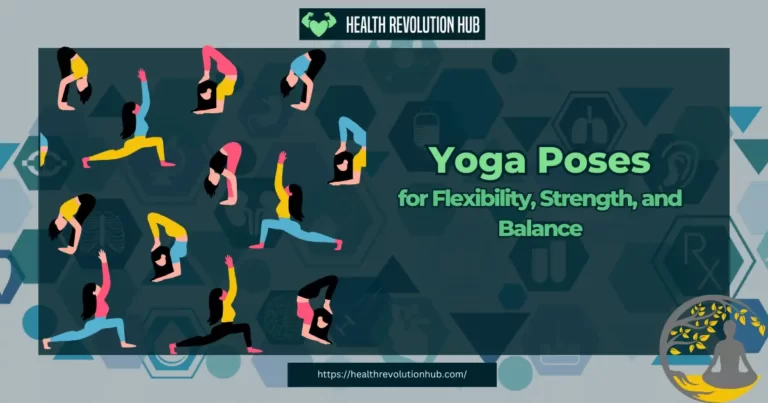The journey towards achieving your fitness goals can often be challenging and overwhelming. It’s easy to feel lost amid a sea of conflicting advice and endless exercise options. But fear not! In this blog post, I will guide you through creating a workout routine that will help you reach your goals, whether you’re a beginner or a fitness enthusiast looking for fresh ideas.
Why a Workout Routine Matters
Before we jump into the nitty-gritty of designing a workout routine, let’s take a moment to understand why having a structured plan is crucial.
- Efficiency: A well-planned workout routine ensures that you make the most out of your time at the gym or during home workouts. By focusing on specific muscle groups and incorporating different exercises, you maximize your results and avoid wasting time on aimless wandering.
- Progression: Consistency is key when it comes to achieving your fitness goals. A structured routine allows you to track your progress and steadily increase the intensity or difficulty level of your workouts. Gradual increases in weight, reps, or duration challenge your body and lead to continuous improvement.
- Accountability: Following a workout routine creates a sense of discipline and commitment. When you have a plan in place, it’s easier to stick to it and hold yourself accountable. Plus, having a set schedule makes it harder to find excuses for skipping workouts.
Now that we understand the importance of having a workout routine, let’s dive into the main components that will help you build an effective and sustainable plan.
Setting SMART Goals
To start, it’s crucial to define your fitness goals. Setting specific, measurable, achievable, relevant, and time-bound (SMART) goals provides clarity and focus. Ask yourself: What do I want to achieve? Whether your aim is to lose weight, build muscle, increase flexibility, or improve cardiovascular endurance, naming your goals will allow you to tailor your workout routine accordingly.

For example, if your goal is weight loss, you might focus on a combination of cardiovascular exercises and strength training to boost metabolism and burn calories. On the other hand, if your goal is muscle gain, your routine would prioritize resistance training with heavier weights and compound exercises.
Designing Your Exercise Routine
- Cardiovascular Exercises: Cardiovascular or aerobic exercises are essential for maintaining cardiovascular health, burning calories, and boosting endurance. Incorporating activities like jogging, cycling, dancing, or swimming into your routine will help you increase your heart rate and work up a sweat. Aim for at least 150 minutes of moderate-intensity cardio activities or 75 minutes of vigorous cardio activities per week.

- Resistance Training: Whether you’re aiming for sculpted muscles or simply looking to tone and strengthen your body, resistance training is key. This type of exercise involves working against a force, such as lifting weights or using resistance bands. Focus on compound exercises that target multiple muscle groups simultaneously, such as squats, deadlifts, bench presses, and rows. Aim for two to three days of resistance training per week, with a day of rest in between to allow for muscle recovery.
- Flexibility and Mobility: Flexibility exercises improve joint range of motion and help prevent injuries. Include activities like stretching, yoga, or Pilates in your routine to enhance flexibility and mobility. Don’t forget to warm up before each workout and dedicate time to cool down and stretch afterward. Aim for at least two to three days of flexibility training per week.
- HIIT or Circuit Training: High-Intensity Interval Training (HIIT) and circuit training are excellent options for those looking for efficient and time-effective workouts. These workouts involve alternating between short bursts of high-intensity exercises and brief recovery periods. Not only do they torch calories, but they also improve cardiovascular fitness and promote fast-twitch muscle fibers. Incorporate one or two days of HIIT or circuit training into your routine.
Structuring Your Workout Week

Now that you have an idea of the different components to include in your workout routine, let’s discuss how to structure your workout week for optimal results. Here’s a sample workout schedule, but feel free to adjust it to fit your preferences and availability:
- Monday: Strength Training Day
- Focus on compound exercises like squats, deadlifts, bench presses, and rows.
- Perform three to four sets of each exercise with 8-12 reps per set.
- Rest for 60-90 seconds between sets.
- Tuesday: Cardiovascular Day
- Engage in 30-45 minutes of moderate-intensity cardio, such as jogging or cycling.
- For variety, try incorporating interval training by alternating between high and low-intensity intervals.
- Wednesday: Active Rest Day
- Engage in light activities like yoga, stretching, or a leisurely walk.
- This day allows your muscles to recover while keeping you active.
- Thursday: Strength Training Day
- Focus on different muscle groups than Monday’s session.
- Incorporate exercises like lunges, shoulder presses, push-ups, and pull-ups.
- Follow the same set and rep scheme as Monday.
- Friday: Cardiovascular Day
- Repeat a similar cardio routine as Tuesday, but mix up the activity to keep it exciting.
- Consider trying a dance class, swimming, or incorporating a new outdoor sport into your routine.
- Saturday: Flexibility and Mobility Day
- Dedicate time to yoga or Pilates to improve flexibility and enhance recovery.
- Focus on stretching all major muscle groups for a well-rounded routine.
- Sunday: Rest Day
- Take a complete day off from structured exercise.
- This is a chance for your body to recover and recharge for the upcoming week.
Staying Motivated and Making Progress
Starting a workout routine is often the easy part; maintaining consistency and staying motivated can be more challenging. Here are some tips to help you stay on track:
- Set Short-Term Milestones: Breaking down your long-term goal into smaller, achievable milestones makes the journey more manageable. Celebrate each milestone you achieve, whether it’s running a mile without stopping or lifting weights you never thought possible.
- Find an Accountability Partner: Enlist a friend, family member, or workout buddy who shares your fitness goals. Having someone to exercise with can keep you motivated, provide support, and make the process more enjoyable.
- Mix It Up: Avoid falling into a workout rut by regularly changing your routine. Experiment with new exercises, try different classes, or explore new workout apps or YouTube channels. Keeping your workouts fresh and exciting will prevent boredom and plateaus.
- Track Your Progress: Maintain a workout journal or use a fitness app to record your workouts, track your progress, and celebrate milestones. Seeing improvements in your strength, endurance, or flexibility will boost your confidence and motivation.
Conclusion
Designing and sticking to a workout routine is a powerful tool in achieving your fitness goals. By setting SMART goals, incorporating a variety of exercises, and structuring your workout week, you can create a plan that suits your needs and preferences. Remember to stay motivated, celebrate your successes, and listen to your body. With dedication and consistency, you’ll be well on your way to a healthier, stronger, and more confident you. Get started today and take the first step towards a fitter future!
Related topics Workout Equipments: Your Ultimate Guide to Achieving Fitness Goals
Fitness Evolution 2023: Incredible Body Transformation!








